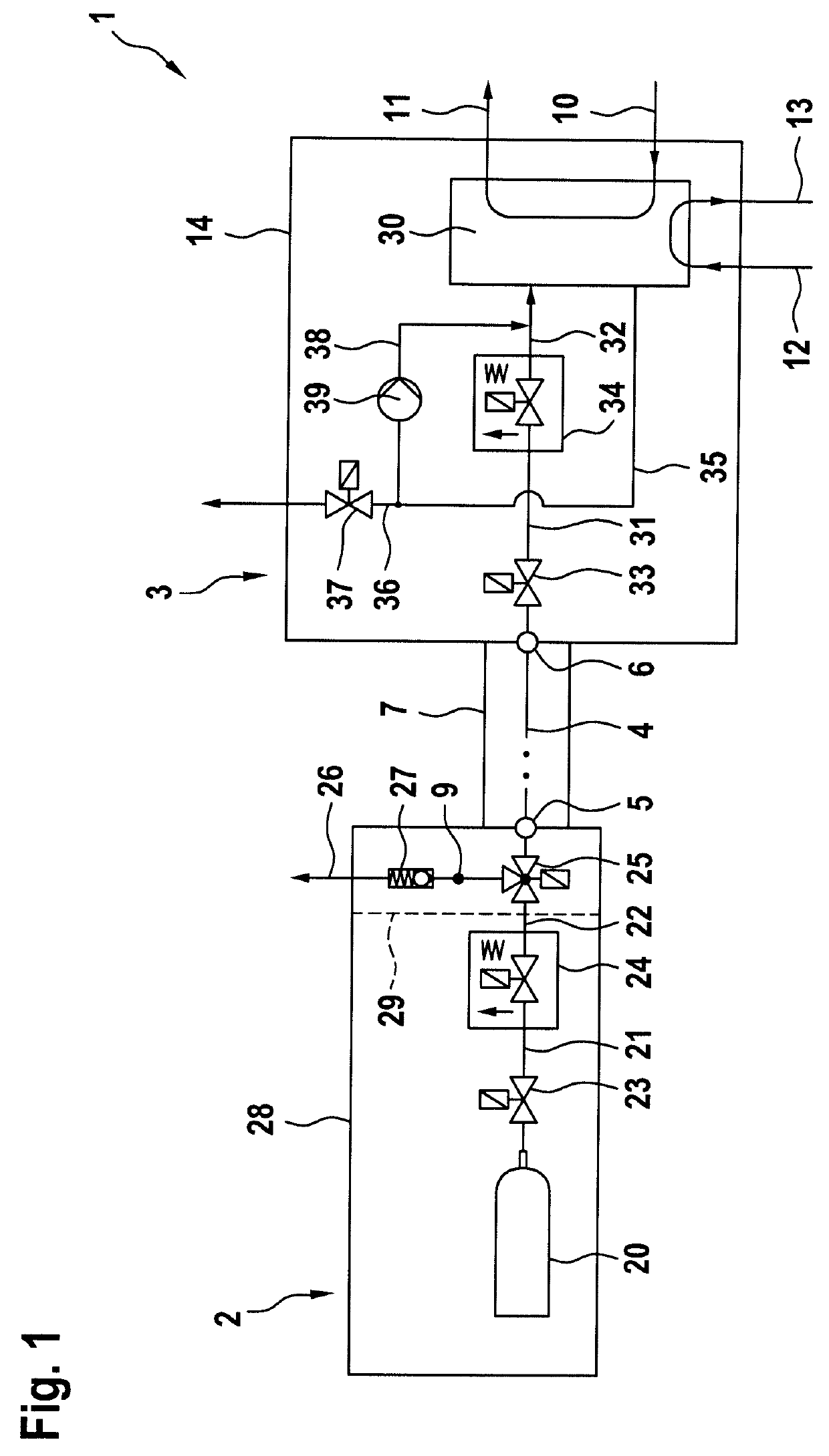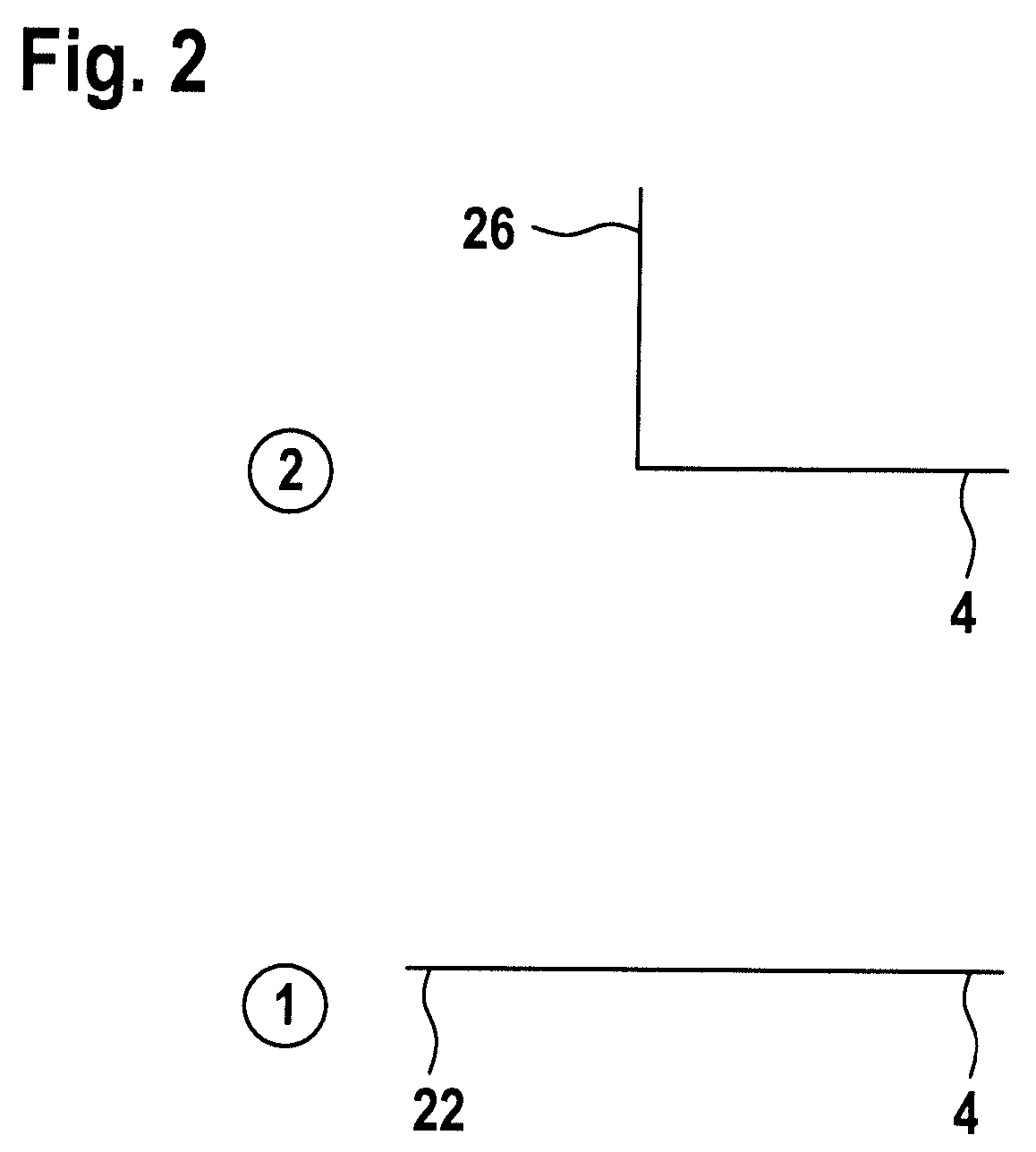Explosion-protected fuel cell system and method for deactivating a fuel cell system
a fuel cell and explosion-protected technology, applied in the direction of fuel cells, motive system fuel cells, reactant parameter control, etc., can solve the problems of exceeding the lower explosive limit, at least severely restricting the exchange of gas between the housing interior and the environment, and particularly high hydrogen leakage rate, so as to minimize the risk of hydrogen explosion and structural simple
- Summary
- Abstract
- Description
- Claims
- Application Information
AI Technical Summary
Benefits of technology
Problems solved by technology
Method used
Image
Examples
Embodiment Construction
[0033]FIG. 1 schematically shows an embodiment of a fuel cell system 1 according to the invention. The fuel cell system 1 comprises a tank module 2 and a fuel cell module 3, wherein hydrogen can flow from the tank module 2 through a hydrogen supply line 4 into the fuel cell module 3.
[0034]In the embodiment illustrated, the tank module 2 comprises a high-pressure hydrogen reservoir (tank) 20, a main shut-off valve 23 for the tank 20 and a pressure reducer 24. Through a hydrogen line 21, hydrogen can flow from the tank 20 to the pressure reducer 24. Here, the hydrogen pressure is reduced to a pressure of preferably 0.5 MPa to 1.2 MPa and fed from there through a hydrogen line 22. The hydrogen flows through the 3 / 2-way valve 25 and enters the hydrogen supply line 4 which at the connection point 5 is connected to the hydrogen line 22. The length of the hydrogen supply line 4 is dependent on the distance between the tank module 2 and the fuel cell module 3, which is indicated by the dott...
PUM
| Property | Measurement | Unit |
|---|---|---|
| opening pressure | aaaaa | aaaaa |
| pressure | aaaaa | aaaaa |
| pressure | aaaaa | aaaaa |
Abstract
Description
Claims
Application Information
 Login to View More
Login to View More - R&D
- Intellectual Property
- Life Sciences
- Materials
- Tech Scout
- Unparalleled Data Quality
- Higher Quality Content
- 60% Fewer Hallucinations
Browse by: Latest US Patents, China's latest patents, Technical Efficacy Thesaurus, Application Domain, Technology Topic, Popular Technical Reports.
© 2025 PatSnap. All rights reserved.Legal|Privacy policy|Modern Slavery Act Transparency Statement|Sitemap|About US| Contact US: help@patsnap.com


